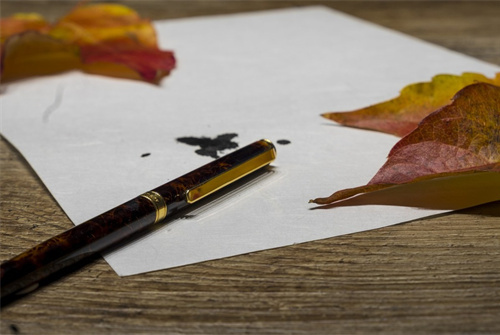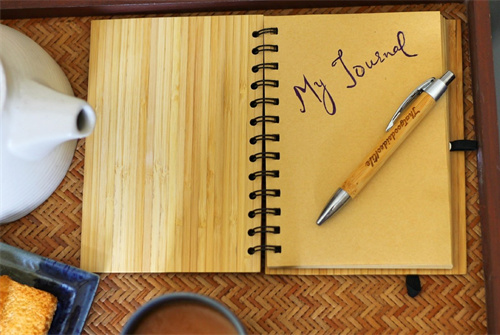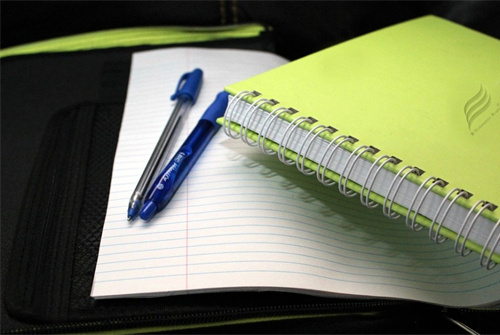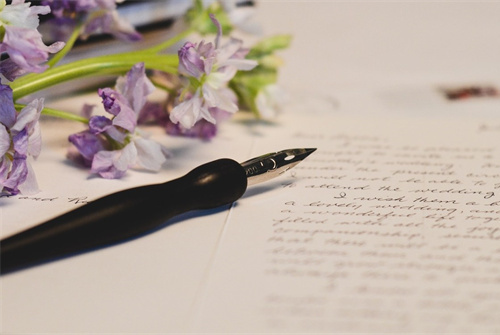故宫英语作文好句子锦集50句

描写故宫的英语作文
导语:故宫是中国最大的古建筑群,小编收集关于描写故宫的英语作文,欢迎阅读
第一篇:北京故宫
Beijing Forbidden City, the Ming and Qing dynasties of the palace. Located in the center of Beijing. Ching Ming, said the Forbidden City in 1925, said before the Forbidden City. Station area of 15 square meters. Is the world's largest and best preserved ancient palace complex. Is the highest level of ancient Chinese architectural masterpiece
Forbidden City palace building is divided into the northern part of the former southern part of post-sleep. Former are Wo, and in Bulgaria together the three main hall, the emperor towards a receiving Chaohe, drawing ministers and holding large ceremonies where the three main hall and also the tallest building in the Forbidden City, showing their extraordinary the lofty status. After Emperor Qin Shi Huang and Empress, funeral, Fei place to live, the emperor and empress at the central axis of the palace residence, the Palace of the sides, six Eastern Palaces and the Western Hospital said Liu Gong, for the aunt, Princess live. After former sleep, clear division of labor, not easily crossed, it reflects the Chinese ancient hierarchical, differentiated ethics.
Palace of ancient buildings, from the emperor Zhu Di himself planned construction. Largest existing structure of the rigorous, beautiful decoration, heritage of the many unique buildings in China, the world famous palace complex
翻译:
北京故宫,是明清两朝的皇宫。位于北京城的中心。清明时称紫禁城,1925年始称故宫。站的面积15万平方米。是全世界规模最大、保存最完好的古代皇宫建筑群。也是中国古代建筑最高水平的杰作
紫禁城内的皇宫建筑分为南部前朝部分北部后寝部分。前朝有太和、中和、保合三大殿,是皇帝上朝接受朝贺、借鉴群臣和举行大型典礼的地方,这三大殿与也是故宫中最高大的建筑物,表现出他们不同凡响的崇高地位。后秦始皇帝和皇后、殡、妃居住的地方,皇帝和皇后居在中轴线上的宫室中,左右各有六处宫院称东六宫和西六宫,供姨、妃居住。前朝后寝,分工明确,不得随便逾越,体现了中国自古以来等级分明、内外有别的伦理观念。
故宫古建筑群,由朱棣皇帝亲自策划营建。现存规模最大,构造之严谨,装饰之精美,文物之众多,在中国建筑中绝无仅有,是世界有名的'皇宫建筑群。
第二篇:北京故宫
National Palace Museum, also known as "Forbidden City", located in the north of Tiananmen Square in Beijing, there have been here 24 emperors ruled China, the Ming and Qing Dynasties (1368 ~ 1911) of the palace, now turned into "National Palace Museum." National Palace Museum is the largest museum of ancient culture and the arts, national cultural heritage, world-famous tourist destination. Forbidden City covers an area of 72 thousand square meters, the temple palace with 9,999 rooms, construction area of 155,000 square meters, known as the "temple of the sea." Palace of the Forbidden City known as one of the world's five (Beijing Forbidden City, the Palace of Versailles in France, Buckingham Palace, the White House, Russia, the Kremlin), and was listed by UNESCO as "World Cultural Heritage."
翻译
故宫,也称“紫禁城”,位于北京市天安门广场北侧,先后有24个皇帝在这里统治中国,是明、清两朝(公元1368~1911年)的皇宫,现辟为“故宫博物院”。故宫博物院是中国最大的古代文化艺术博物馆,全国重点文物保护单位,世界著名的旅游胜地。故宫占地面积达72万多平方米,有殿宇宫室9999间半,建筑面积【第15句】:5万平方米,被称为“殿宇之海”。故宫被誉为世界五大宫之一(北京故宫、法国凡尔赛宫、英国白金汉宫、美国白宫、俄罗斯克里姆林宫),并被联合国教科文组织列为“世界文化遗产”。
第三篇:故宫博物院之游
Recently I spent over three hours looking, reading and enjoying the exhibits at the National Palace Museum located in the suburbs. Many local and foreign visitors go there daily to take pictures outside and spend endless hours inside. No cameras are allowed inside, but you can buy you can buy colored slides of the exhibits in the gift shop downstairs. There is a very large collection of beautiful jades. Also, there is an ancient bronze vessel exhibit. Some of the exhibits are changed regularly for special collections such as porcelain and silk paintings. My attention was mainly in the room with the wall-size slide show describing some archeological discoveries from pre-history tine. Also, the oracle bones' exhibit was very good; there seemed to be an endless amount of rare, beautiful, interesting, and fascinating things.
翻译:
最近,我花了三个小时,阅读和享受在故宫博物馆的展品位于郊区。许多当地和外国游客去那里每天拍照外,花费无数时间进去。不允许有摄像头在里面,但你可以买你可以买彩色幻灯片展示的礼品店下楼。有一个非常大的漂亮的玉器的集合。另外,有一个古老的青铜器展览。的一些展品是定期更换等特殊收藏瓷器和丝绸绘画。我的注意力主要是在房间里的墙壁大小的幻灯片描述一些来自史前考古发现齿。同时,甲骨文的展览非常好,似乎有无尽的罕见,漂亮,有趣,和迷人的东西。
英语作文 描写故宫
Situated in the western outskirts of Haidian District, the Summer Palace is 15 kilometers (【第9句】:3 miles) from central Beijing. Having the largest royal park and being well preserved, it was designated, in 1960 by the State Council, as a Key Cultural Relics Protection Site of China. Containing examples of the ancient arts, it also has graceful landscapes and magnificent constructions. The Summer Palace is the archetypal Chinese garden, and is ranked amongst the most noted and classical gardens of the world. In 1998, it was listed as one of the World Heritage Sites by UNESCO.
Constructed in the Jin Dynasty (1115-1234), during the succeeding reign of feudal emperors; it was extended continuously. By the time of the Qing Dynasty (1644-1911), it had become a luxurious royal garden providing royal families with rest and entertainment. Originally called 'Qingyi Garden' (Garden of Clear Ripples), it was know as one of the famous 'three hills and five gardens' (Longevity Hill, Jade Spring Mountain, and Fragrant Hill; Garden of Clear Ripples, Garden of Everlasting Spring, Garden of Perfection and Brightness, Garden of Tranquility and Brightness, and Garden of Tranquility and Pleasure). Like most of the gardens of Beijing, it could not elude the rampages of the Anglo-French allied force and was destroyed by fire. In 1888, Empress Dowager Cixi embezzled navy funds to reconstruct it for her own benefit, changing its name to Summer Palace (Yiheyuan). She spent most of her later years there, dealing with state affairs and entertaining. In 1900, it suffered again, being ransacked by the Eight-Power Allied Force. After the success of the 1911 Revolution, it was opened to the public.
Composed mainly of Longevity Hill and Kunming Lake, The Summer Palace occupies an area of 294 hectares (7【第26句】:5 acres), three quarters of which is water. Guided by nature, artists designed the gardens exquisitely so that visitors would see marvelous views and be amazed by perfect examples of refined craftwork using the finest materials.
Centered on the Tower of Buddhist Incense (Foxiangge) the Summer Palace consists of over 3,000 structures including pavilions, towers, bridges, and corridors. The Summer Palace can be divided into four parts: the court area, front-hill area, front-lake area, and rear-hill and back-lake area.
Front-Hill Area: this area is the most magnificent area in the Summer Palace with the most constructions. Its layout is quite distinctive because of the central axis from the yard of Kunming Lake to the hilltop, on which important buildings are positioned including Gate of Dispelling Clouds, Hall of Dispelling Clouds, Hall of Moral Glory, Tower of Buddhist Incense, the Hall of the Sea of Wisdom, etc.
Rear-Hill and Back-Lake Area: although the constructions are fewer here, it has a unique landscape, with dense green trees, and winding paths. Visitors can feel a rare tranquility, and elegance. This area includes scenic spots such as Kunming Lake and Back Lake , which presents a tranquil beauty, Garden of Harmonious Interest , built by imitating the layout of Southern China’s classical gardens, and Suzhou Market Street, endowed with a strong flavor of the water town Suzhou.
Court Area: this is where Empress Dowager Cixi and Emperor Guangxu met officials, conducted state affairs and rested. Entering the East Palace Gate, visitors may see the main palace buildings: the Hall of Benevolence and Longevity served as the office of the Emperor, the Hall of Jade Ripples where Guangxu lived, the Hall of Joyful Longevity, Cixi's residence, the Garden of Virtue and Harmony where Cixi was entertained, Yiyun House , where once lived the Empress Longyu, and Long Gallery, which measures the longest in Chinese gardens.
Front Lake Area: covering a larger part of the Summer Palace, opens up the vista of the lake. A breeze fluttering, waves gleam and willows kiss the ripples of the vast water. In this comfortable area there are the Eastern Bank and Western Bank, Seventeen-Arch Bridge, Nanhu Island, the largest island in Summer Palace, Bronze Ox, an imposing statue beside the lake, and Marble Boat, built in western style with elaborate decorations . On the western bank float six distinct bridges amongst which the Jade-Belt Bridge is the pretty!
更多的优秀英语作文推荐:
高中生压力的英语作文
做一个可爱的中学生
如何做一个优秀的中学生
描写故宫英语作文
北京故宫是中国明清两代的'皇家宫殿,旧称为紫禁城,位于北京中轴线的中心,是中国古代宫廷建筑之精华。关于古迹故宫的英语作文应该怎么写
描写故宫英语作文篇一:
The imperial palace, also known as the Forbidden City, is the imperial palace of the Ming and qing dynasties, which is the largest and most complete ancient architectural complex in China. I especially want to know the architecture of ancient palaces and the living environment of ancient emperors.
One weekend in the golden autumn, the sun is shining and the autumn wind is crisp. My mother and I went to visit the Palace Museum in the center of the city. I was very happy.
Enter the gate of the Forbidden City, "wow! It's so big here!" I couldn't help it. The mother said, "the most spectacular is still in the back!" We first visited the architectural model of the imperial palace and its construction. I know that the imperial palace covers an area of over 720,000 square meters, with more than 9,000 rooms, all wooden structures, and all the wooden structures have no nails. The palace is the blue and white stone base, the tall roof, the yellow glazed tile, the pattern of the dragon everywhere, and decorated with the brilliant color of the golden wall. I observed all the palaces, and found that the palaces were lined up along the north-south axis, and spread out to the sides, to the north and south, and to the right and left. I told mom, I found mother listen to nod a smile, said: "the central axis not only in the Forbidden City, and nanda YongDingMen, north to the drum tower, almost throughout the whole city. It's magnificent, well-planned and spectacular.
We have been visiting the taihe temple from the imperial garden. What a breathtaking view! In the Forbidden City, the most striking is the "three halls" : the hall of supreme harmony, the hall of harmony, the hall of protection and the temple. They are all built on the 8-meter-high base of the white jade, which looks like the qiong yuyu in the myth. The first hall of supreme harmony was the most magnificent building. People called it the "throne room". It was the place where the emperor held the grand ceremony. It is 28 meters high, 63 meters, 35 meters north and south, and a large pillar with a diameter of 1 meter. Among them, six large pillars, one meter in diameter around the throne, are flat dragon pillars of leached gold. The throne is located at the base of the two meters high in the temple, with the graceful crane and the top of the furnace, followed by a carefully carved screen. The whole hall is decorated with golden walls, which are both majestic and magnificent. The hall of neutralization was the place where the emperor went to the hall of supreme harmony to take a rest and exercise etiquette. Baohe and the temple are the place where the emperor gives banquet to the king of the foreign land every New Year. This is just the palace buildings, and house decoration is numerous, the rarities of the mother said: "these treasures is only part of it, when Chiang kai-shek fled to Taiwan carried away many treasure palace, there are some loss in a foreign country". I feel sorry for the loss of these treasures. When will these lost treasures return to the embrace of the motherland? I am looking forward to the reunion of Taiwan and mainland as soon as possible.
The visit of the Forbidden City made me linger. The Palace Museum is an unparalleled masterpiece. It is a miracle. Our five thousand years of Chinese culture are profound and profound, and we should be proud and proud to have built such a magnificent palace for the ancients. At the same time, we also have the responsibility to protect these cultural relics from destruction, so that the five thousand years of splendid civilization of the motherland will be handed down.
描写故宫英语作文篇二:
I've been to a lot of beautiful places, but in my mind, the most important thing in my mind is the Forbidden City.
The Forbidden City is a place where the ancient emperor of China can live. The imperial palace has: temple of heaven, echo wall, emperor's study and so on many beautiful places. There are colorful flowers in the temple of heaven, very beautiful. The flowers and grasses and the famous flowers and plants are all numerous and numerous, very beautiful, far from looking like a colorful flower in the open. Like a fairyland on earth. The temple of heaven is not a famous artist.
The echo wall is a miracle of acoustics, which is a masterpiece of ancient craftsman. The wall tiles of the echo wall are not as strong as others. It is specially made in shandong linqing place. The slurry brick is exquisite, and the sound of the metal sound, commonly known as the gold brick. If you shout in the echo wall, the echo will be strong.
It's better to see if you have the chance, and believe that it will make you feel better.
描写故宫英语作文篇三:
Because the Palace Museum is a place of five thousand years of brilliance and ancient culture, so he has long been a tourist attraction in my heart, and this summer vacation I have finally made a dream come true.
In Beijing I will ride my father and mother went to the tiananmen square, across tiananmen square, the meridian gate of the world-famous greeted the hall of supreme harmony, the hall of supreme harmony majestic, magnificent, colorful glazed tile, such as a long arranged very neat. Curved corner with a monster, four up the eaves of the cock appear grand hall of supreme harmony, to the hall of supreme harmony, seventy-two large andalusite carved dragon painted chicken shows the architecture of the feudal monarchy. The golden roof reflects the majesty and status of the ancient Chinese emperors. The great hall looked solemn and solemn, but the beauty of the appearance was so monotonous and heavy that I was in vain. I don't know why I feel as if a group of puppets are standing respectfully on either side of the house. Incense sticks up in the incense burner, and the emperor sits high in the temple. The Palace Museum, a symbol of the ancient kingship, has been invaded by a brick and a brick. It is far from the palace of Buckingham Palace.
In the afternoon, we in addition to the front door, look back at taihe light standing in tiananmen square, this magnificent buildings, so the layout of the orderly, so solemn, not amazing, hope this trip to the Forbidden City will become my eternal memory.
参观故宫英语作文
到了北京我们就迫不及待的`跟着导游一起去到故宫,走在充满历史韵味的故宫里,听着导游的介绍,我不禁为祖国人民的智慧而自豪。
篇一:参观故宫英语作文
Dear Mickey,
How did you spend your summer vacation this year?
In my vacation, my family and I went to National Park. We visited the island in the center of the lake.
We took a ferryboat to the island at 9:00 am. The first place we visited was the Botanical Garden. Then we visited the Site of an Old Temple which had a history of over 600 years. Lunch was served at 11:【第30句】: After that, we went to see varieties of birds at the Birds House. We went shopping for some souvenirs at the Gift Shop before we left. Finally, we returned from the island by cable car at 3:30 pm.
Though we were tired, we had a good time, because we like nature very much. Do you like nature, too?
I’m looking forward to your reply!
Li Hua
篇二:参观故宫英语作文
Situated in the western outskirts of Haidian District, the Summer Palace is 15 kilometers (【第9句】:3 miles) from central Beijing. Having the largest royal park and being well preserved, it was designated, in 1960 by the State Council, as a Key Cultural Relics Protection Site of China. Containing examples of the ancient arts, it also has graceful landscapes and magnificent constructions. The Summer Palace is the archetypal Chinese garden, and is ranked amongst the most noted and classical gardens of the world. In 1998, it was listed as one of the World Heritage Sites by UNESCO.
Constructed in the Jin Dynasty (1115-1234), during the succeeding reign of feudal emperors; it was extended continuously. By the time of the Qing Dynasty (1644-1911), it had become a luxurious royal garden providing royal families with rest and entertainment. Originally called 'Qingyi Garden' (Garden of Clear Ripples), it was know as one of the famous 'three hills and five gardens' (Longevity Hill, Jade Spring Mountain, and Fragrant Hill; Garden of Clear Ripples, Garden of Everlasting Spring, Garden of Perfection and Brightness, Garden of Tranquility and Brightness, and Garden of Tranquility and Pleasure). Like most of the gardens of Beijing, it could not elude the rampages of the Anglo-French allied force and was destroyed by fire. In 1888, Empress Dowager Cixi embezzled navy funds to reconstruct it for her own benefit, changing its name to Summer Palace (Yiheyuan). She spent most of her later years there, dealing with state affairs and entertaining. In 1900, it suffered again, being ransacked by the Eight-Power Allied Force. After the success of the 1911 Revolution, it was opened to the public.
Composed mainly of Longevity Hill and Kunming Lake, The Summer Palace occupies an area of 294 hectares (7【第26句】:5 acres), three quarters of which is water. Guided by nature, artists designed the gardens exquisitely so that visitors would see marvelous views and be amazed by perfect examples of refined craftwork using the finest materials.
Centered on the Tower of Buddhist Incense (Foxiangge) the Summer Palace consists of over 3,000 structures including pavilions, towers, bridges, and corridors. The Summer Palace can be divided into four parts: the court area, front-hill area, front-lake area, and rear-hill and back-lake area.
Front-Hill Area: this area is the most magnificent area in the Summer Palace with the most constructions. Its layout is quite distinctive because of the central axis from the yard of Kunming Lake to the hilltop, on which important buildings are positioned including Gate of Dispelling Clouds, Hall of Dispelling Clouds, Hall of Moral Glory, Tower of Buddhist Incense, the Hall of the Sea of Wisdom, etc.
Rear-Hill and Back-Lake Area: although the constructions are fewer here, it has a unique landscape, with dense green trees, and winding paths. Visitors can feel a rare tranquility, and elegance. This area includes scenic spots such as Kunming Lake and Back Lake , which presents a tranquil beauty, Garden of Harmonious Interest , built by imitating the layout of Southern China’s classical gardens, and Suzhou Market Street, endowed with a strong flavor of the water town Suzhou.
Court Area: this is where Empress Dowager Cixi and Emperor Guangxu met officials, conducted state affairs and rested. Entering the East Palace Gate, visitors may see the main palace buildings: the Hall of Benevolence and Longevity served as the office of the Emperor, the Hall of Jade Ripples where Guangxu lived, the Hall of Joyful Longevity, Cixi's residence, the Garden of Virtue and Harmony where Cixi was entertained, Yiyun House , where once lived the Empress Longyu, and Long Gallery, which measures the longest in Chinese gardens.
Front Lake Area: covering a larger part of the Summer Palace, opens up the vista of the lake. A breeze fluttering, waves gleam and willows kiss the ripples of the vast water. In this comfortable area there are the Eastern Bank and Western Bank, Seventeen-Arch Bridge, Nanhu Island, the largest island in Summer Palace, Bronze Ox, an imposing statue beside the lake, and Marble Boat, built in western style with elaborate decorations . On the western bank float six distinct bridges amongst which the Jade-Belt Bridge is the pretty!









